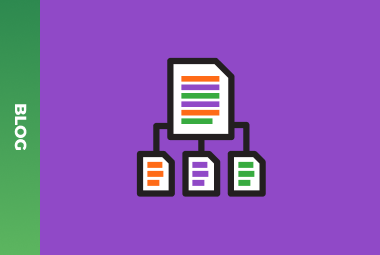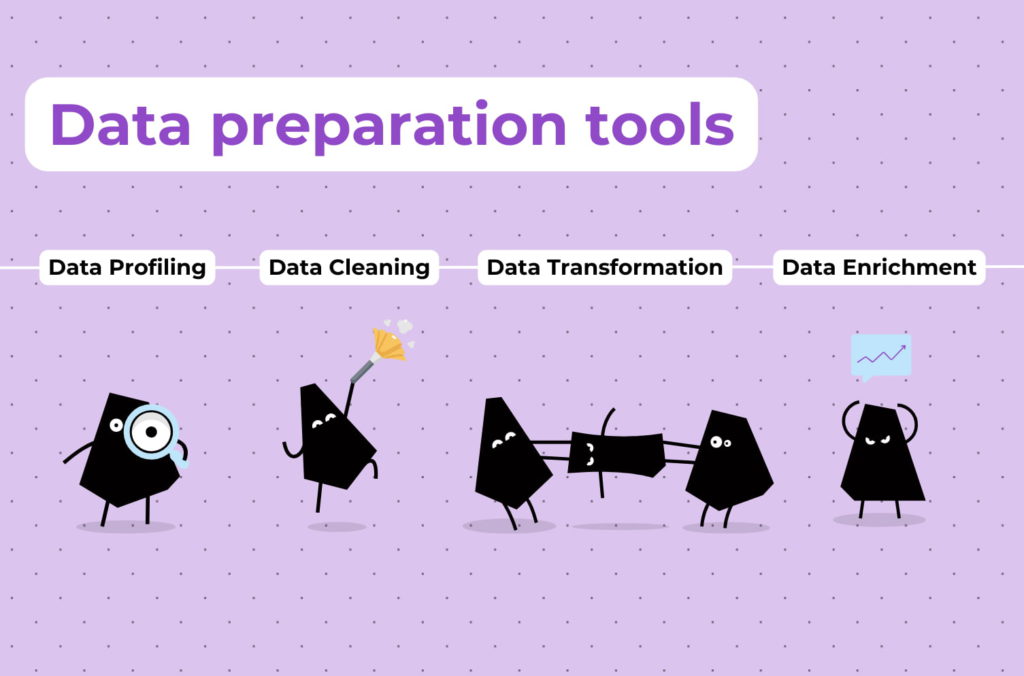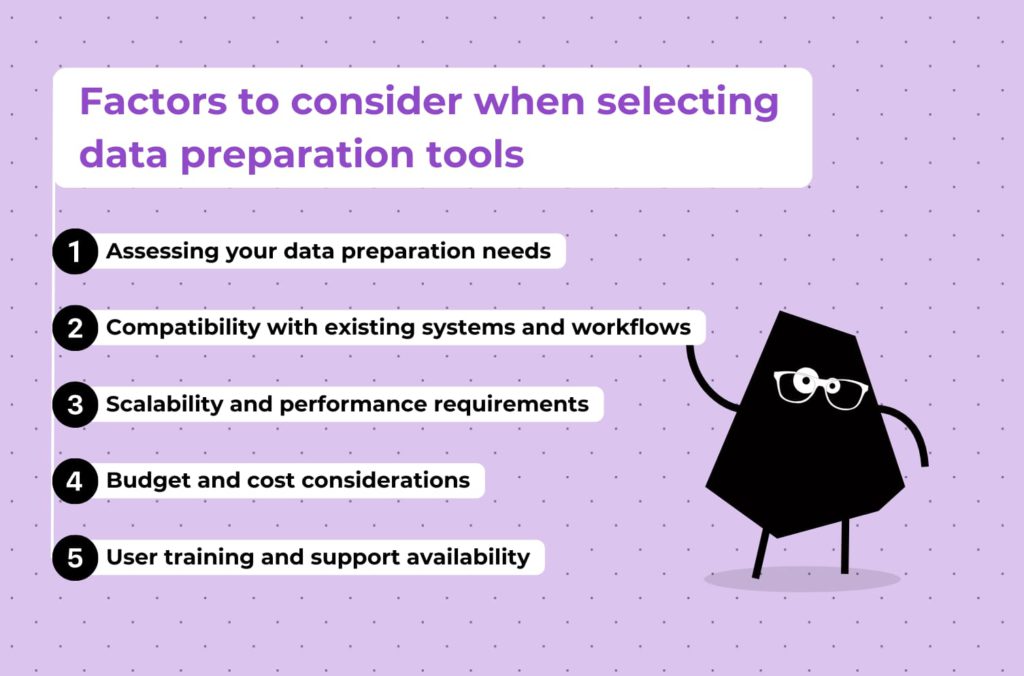Your guide for selecting data preparation tools with practical tips

In a previous article, we delved into the critical role of data preparation in unlocking the true potential of data analytics. Drawing from our own experiences with Trevise we witnessed firsthand the transformative power of effective data preparation in driving insights and innovation. Today, we embark on a new journey to empower businesses in adopting data preparation practices by guiding them through the process of selecting the right data preparation tool.
What is a data preparation tool?
Data preparation tools are software solutions designed to streamline the process of cleansing, transforming, and organizing raw data into a format suitable for analysis and reporting.
In today’s data-driven world, organizations accumulate vast amounts of data from various sources such as databases, spreadsheets, and cloud services. However, raw data is often messy, inconsistent, and may contain errors or duplicates, making it challenging to derive meaningful insights.
Data preparation tools play a crucial role in resolving these issues by providing functionalities to clean, structure, and enhance data efficiently. These tools automate repetitive tasks and allow users to manipulate data without extensive coding or technical expertise.
So, how do data preparation tools work?

- Data Profiling: Data preparation tools analyze the structure, quality, and characteristics of the raw data. They identify patterns, anomalies, and missing values to help users understand the dataset better.
- Data Cleaning: One of the primary functions of data preparation tools is to clean and standardize data. This involves removing duplicates, correcting errors, and formatting data according to predefined rules.
- Data Transformation: Data preparation tools facilitate the transformation of data into a consistent format suitable for analysis. Users can perform operations such as merging datasets, splitting columns, and creating calculated fields.
- Data Enrichment: Some advanced data preparation tools offer features for data enrichment, including data imputation, decoding, and integration with external data sources. These capabilities enhance the quality and depth of the dataset.
Need help with data prep?
Some examples of data prep tools
Data preparation tools come in various forms, each catering to the specific needs and preferences of businesses and data professionals. These tools vary in functionality, ease of use, and target audience. Here, we’ll explore different types of data prep tools, provide examples within each category, share some free data preparation tools, and the ones considered best.
Self-service data preparation tools
Self-service data preparation tools empower non-technical users to manipulate and analyze data without relying on IT or data experts. These tools typically offer intuitive interfaces and guided workflows, allowing users to perform tasks such as data cleansing, data transformation, and data visualization independently.
For example, tools like Tableau Prep, and Alteryx, enable users to visually explore and prepare data for analysis, regardless of their technical expertise. These platforms offer a range of features, including data profiling, drag-and-drop functionality, and machine learning-driven suggestions to streamline the data preparation process.
Test data preparation tools
Test data preparation tools are specifically designed to generate and manage synthetic or simulated data sets for testing and development purposes. These tools help ensure the quality and integrity of software applications by providing realistic test data that mimics production environments.
For instance, Mockaroo, Azure Data Factory, and dbForge Data Generator are popular test data preparation tools that allow users to define custom data schemas, generate large volumes of test data, and simulate various scenarios to validate application functionality and performance.
Are there any free data preparation tools?
Good news: there are some free data preparation tools. They offer basic functionalities for cleaning and transforming data without requiring a significant financial investment. While they may have limitations compared to premium solutions, free tools are suitable for individuals and small businesses with modest data preparation needs.
Examples of free data preparation tools include OpenRefine, and KNIME Analytics Platform These tools provide essential data cleaning and analysis capabilities, making them accessible to a wide range of users without imposing licensing fees.
What are the best data preparation tools?
Best data preparation tools encompass premium solutions with advanced features, robust performance, and comprehensive support options. These tools are ideal for enterprises and organizations with complex data processing requirements and stringent quality standards.
Leading data preparation tools in this category include IBM InfoSphere DataStage, and Microsoft SQL Server Integration Services (SSIS). These platforms offer enterprise-grade data integration, cleansing, and governance capabilities, enabling organizations to manage and transform data at scale effectively.
Factors to consider when selecting data preparation tools
Choosing the right data preparation tool, especially for those new to the field, can be a daunting task. With numerous options available, each offering unique features and functionalities, it’s crucial to assess your requirements carefully. To help you navigate through this process, we’ve compiled a list of key factors to consider when selecting the best data preparation tool for your needs.

Assessing your data preparation needs
Before diving into the selection process, take time to evaluate your data preparation requirements thoroughly. Consider factors such as the volume and variety of data you handle, the complexity of data transformations required, and the skill level of your team members. By understanding your specific needs, you can narrow down your options and focus on tools that align closely with your objectives.
Tip: Create a checklist of essential features and functionalities based on your data preparation workflow. Prioritize requirements based on their importance to your organization’s data strategy.
Compatibility with existing systems and workflows
Ensure that the data preparation tool you choose integrates seamlessly with your existing systems and workflows. Compatibility with databases, data warehouses, BI platforms, and other tools in your tech stack is essential for smooth data interoperability and workflow efficiency. Consider factors such as data formats, APIs, and connectivity options to avoid compatibility issues down the line.
Tip: Reach out to vendors or consult user reviews to gauge the level of integration and interoperability offered by the data preparation tool. Look for solutions that support popular data formats and provide flexible integration options.
Scalability and performance requirements
As your data volumes and processing needs grow, scalability and performance become critical factors in selecting a data preparation tool. Ensure that the tool can handle large datasets and complex transformations without compromising performance. Scalable architectures, distributed processing capabilities, and efficient resource utilization are key indicators of a robust data preparation solution.
Tip: Consider conducting performance benchmarks or trials to evaluate the tool’s scalability and processing speed under real-world conditions. Look for tools that offer horizontal scalability and support for parallel processing to handle increased workloads effectively.
Budget and cost considerations
Budgetary constraints often play a significant role in the selection process of data preparation tools. Evaluate the total cost of ownership, including licensing fees, implementation costs, maintenance fees, and ongoing support expenses. Determine whether the tool offers a pricing model that aligns with your budget and provides value for your investment.
Tip: Explore pricing plans, discounts for long-term commitments, and flexible licensing options offered by vendors. Consider the potential ROI and cost savings associated with improved data quality, productivity gains, and reduced operational overhead.
User training and support availability
Effective user training and ongoing support are crucial for maximizing the value of your data preparation tool investment. Assess the availability of training resources, documentation, tutorials, and user communities provided by the vendor. Additionally, evaluate the responsiveness and expertise of the vendor’s support team in addressing technical issues and resolving user queries promptly.
Tip: Prioritize tools that offer comprehensive training programs, certification courses, and dedicated support channels tailored to your organization’s needs. Seek feedback from existing users to gauge the quality of vendor support and the overall user experience.
Conclusion
We trust that the insights shared in this guide will equip our readers with the knowledge and confidence to navigate the complex landscape of data preparation tools effectively. By understanding their data preparation needs, evaluating key factors, and leveraging practical tips, businesses can make informed decisions that propel them towards data-driven success. As always, if our readers require any assistance with their data preparation processes or have further inquiries, our team at GreenM stands ready to offer support and guidance. Together, let’s unlock the full potential of data preparation and drive innovation in the digital age.






